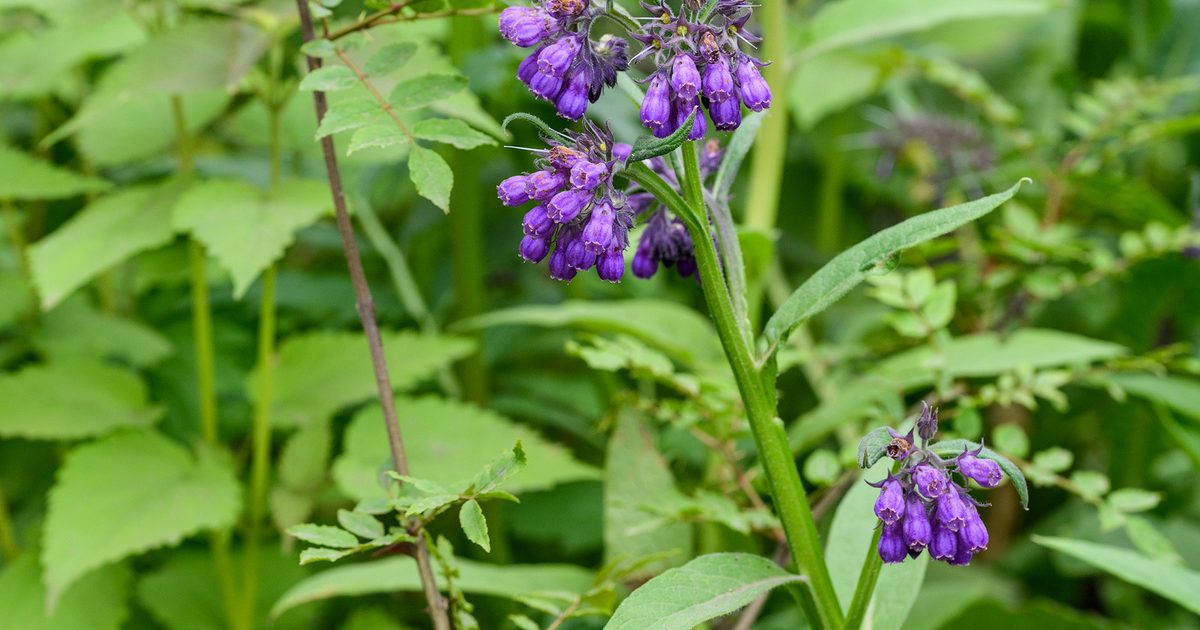Common Names: Knitbone, Boneset, Consound, Bruisewort
Symphytum officinale, commonly known as Comfrey, has a long-standing reputation in herbal medicine for promoting the healing of bones and tissues. The traditional names like Knitbone and Boneset reflect its primary use in aiding the repair of broken bones and managing bone-related ailments, including inflammation (osteitis) and even certain bone tumors (sarcomas).
Parts Used:
-
Roots
-
Leaves
Key Chemical Compounds:
Comfrey contains a range of bioactive compounds, most notably pyrrolizidine alkaloids (PAs). These compounds contribute to its healing properties but also warrant cautious use due to potential toxicity when taken internally.
Major compounds include:
-
Acetyllycopsamine (PA) – roots & leaves
-
Allantoin – promotes tissue regeneration (13,000 ppm in leaves; 6,000-8,000 ppm in roots)
-
Caffeic acid – roots
-
Echimidine, Heliosupine, Intermedine, Lasiocarpine, Lycopsamine, Symphytine (PAs) – roots & leaves
-
Mucilage – roots (soothing properties)
-
Rosmarinic acid – leaves (5,000 ppm, anti-inflammatory)
-
Tannic acids – roots (astringent, wound-healing)
Therapeutic Uses of Comfrey:
Traditionally, Comfrey has been applied externally for various conditions:
-
Bone repair: Accelerates bone knitting after fractures
-
Wound healing: Promotes skin regeneration for cuts, abrasions, and surgical wounds
-
Skin ailments: Eases conditions like eczema, psoriasis, and ulcers
-
Insect bites & bedsores: Soothes irritation and speeds healing
-
Rheumatism & arthritis: Alleviates joint pain and swelling
-
Sprains, bruises, torn ligaments: Reduces inflammation and promotes faster recovery
-
Sunburn & nosebleeds: Used for soothing burns and controlling bleeding
-
Inflamed bunions: Provides relief from swelling and discomfort
Caution:
While Comfrey is highly effective when used externally, internal use is discouraged due to the presence of pyrrolizidine alkaloids, which can be toxic to the liver when ingested in significant amounts or over prolonged periods.
In summary, Symphytum officinale remains one of nature’s best traditional remedies for external injuries and bone health support, combining ancient wisdom with scientifically recognized healing compounds.
Speech Disorder
A speech disorder, also known as a speech impairment...
ADHD
Attention-deficit / hyperactivity disorder (ADHD) is a...
Cerebral Palsy(CP)
Cerebral palsy (CP) is a group of neurological disorders...
Cancer
Cancer is a broad term for diseases where cells...




